
The Most Serene House of Braganza, also known as the Brigantine dynasty, is a dynasty of emperors, kings, princes, and dukes of Portuguese origin which reigned in Europe and the Americas.
Correia is a surname of Portuguese and Galician origin, also spelled Corrêa. The Spanish variant became Correa. Origin: Latin corrigia. Correia and Correa and Correya are found throughout all of the Iberian Peninsula.
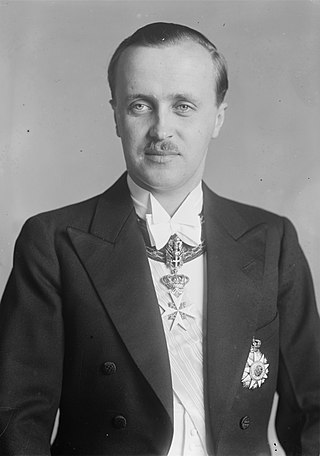
DomDuarte Nuno, Duke of Braganza was the claimant to the defunct Portuguese throne, as both the Miguelist successor of his father, Miguel Januário, Duke of Braganza, and later as the head of the only Brigantine house, after the death of the last ruling Braganza, King Manuel II of Portugal. In 1952, when the Portuguese Laws of Banishment were repealed, the Duke moved his family to Portugal, thus returning the Miguelist Braganzas to their homeland and becoming the first of the former Portuguese royal dynasty to live in Portugal since the abolition of the monarchy in 1910.
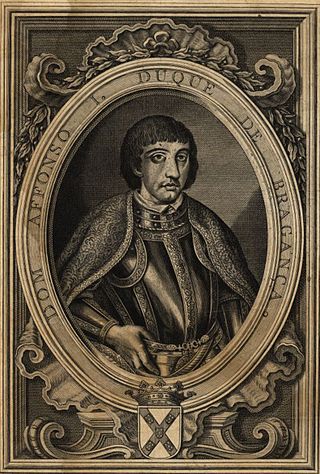
Dom Afonso I of Braganza was the first duke of Braganza and the eighth count of Barcelos. He founded the House of Braganza, the most powerful and wealthy dynasty in Portugal. His descendants became high-ranking nobles, imperial officials, and finally kings of Portugal and emperors of Brazil.
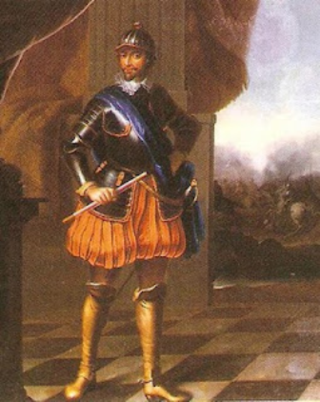
Dom Fernando II of Braganza was the 3rd Duke of Braganza and the 1st Duke of Guimarães, among other titles. He is known for being executed for treason against the King.
Constable of Portugal was an office created by King Ferdinand I of Portugal in 1382, to substitute the High Standard-bearer (Alferes-Mor) as the head of the Portuguese Military. It was also referred as the Constable of the Kingdom.
Gonçalo (Gonçalves) Pereira (c.1280–1348) was a Portuguese prelate of the Catholic Church who served as the archbishop of Braga from 1326 until 1349.

Count of Barcelos is a title of nobility, the first to be granted in Portugal. It was created in 1298 by king Denis I and initially it was a non hereditary title, although most of the holders belonged to the Teles de Menezes family. It was only after the death of the 6th Count, when it was granted to Nuno Álvares Pereira, that the title became hereditary. The 8th Count of Barcelos was created Duke of Braganza in 1442, by his nephew king Afonso V, and his descendants rose to the Portuguese throne after the country regained its independence from Spain in 1640.

Duke of Cadaval is a title of Portuguese nobility. It was created on 26 April 1648 by King John IV of Portugal for his distant cousin, Dom Nuno Álvares Pereira de Melo (1638–1725), who was already 4th Marquis of Ferreira and 5th Count of Tentúgal.
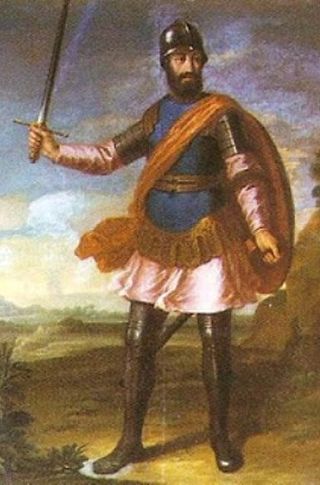
Dom Fernando I of Braganza was the 2nd Duke of Braganza and the 1st Marquis of Vila Viçosa, among other titles. He took part in the Portuguese conquests in North Africa and served as governor of different territories there.

Count of Ourém is a Portuguese title granted in 1370 by King Fernando I of Portugal, to Dom João Afonso Telo, uncle of Queen Leonor Teles. Later he also became the fourth Count of Barcelos.
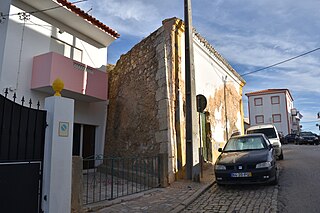
The Castle of Alcantarilha is a medieval fortress and its remnant walls in Portugal, in the civil parish of Alcantarilha, municipality of Silves, in the Portuguese Algarve region of southwestern Iberia. It is a little-known monument, now in ruins, used for the protection of the people of the village and surrounding area from attacks by north African pirates.

The County of Portugal refers to two successive medieval counties in the region around Guimarães and Porto, today corresponding to littoral northern Portugal, within which the identity of the Portuguese people formed. The first county existed from the mid-ninth to the mid-eleventh centuries as a vassalage of the Kingdom of Asturias and the Kingdom of Galicia and also part of the Kingdom of León, before being abolished as a result of rebellion. A larger entity under the same name was then reestablished in the late 11th century and subsequently elevated by its count in the mid-12th century into an independent Kingdom of Portugal.

Castle of Loulé is a castle in the municipality of Loulé, in the Portuguese Algarve. Classified a National Monument, since 20 June 1924, three towers remain within the cordon of walls, the remnants of the town hall located within the structure.
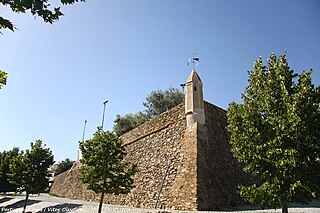
The Castle of Arronches, is a Portuguese medieval castle in civil parish of Assunção, in the municipality of Arronches, in the district of Portalegre.

The Portuguese nobility was a social class enshrined in the laws of the Kingdom of Portugal with specific privileges, prerogatives, obligations and regulations. The nobility ranked immediately after royalty and was itself subdivided into a number of subcategories which included the titled nobility and nobility of blood at the top and civic nobility at the bottom, encompassing a small, but not insignificant proportion of Portugal's citizenry.

Egas Moniz de Riba Douro, also known as o Aio (1080-1146) was a Portuguese nobleman, who served in the Portuguese Crown as the tutor of Afonso Henriques.
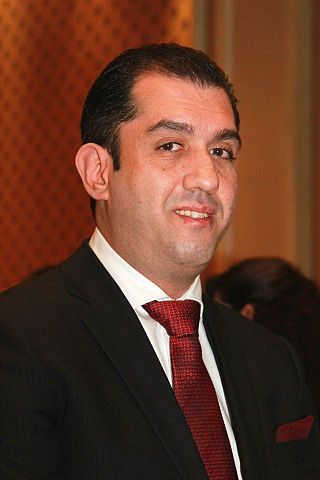
Berto Correia de Sousa is a Portuguese-Swiss bank manager living and working in Zurich, Switzerland, member of two of the most prestigious families of the Portuguese nobility, the House of Correia and the House of Sousa.

The Castle of Almada is a medieval castle located in the civil parish of Almada, Cova da Piedade, Pragal e Cacilhas, in the municipality of Almada, Portuguese Setúbal.

The Castle of Tavira is a medieval castle located in the parish of Santiago, Tavira municipality, Faro district of Portugal. In a dominant position over the mouth of the river Gilão, the settlement has developed as an important sea port since antiquity, with its predecessors dating back to the 8th century BC, passing through the hands of Phoenicians, Greeks, Celts, Carthaginians, Romans, Moors and the Portuguese crown.
















